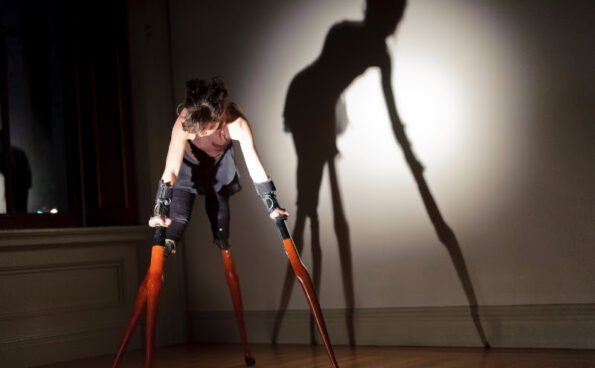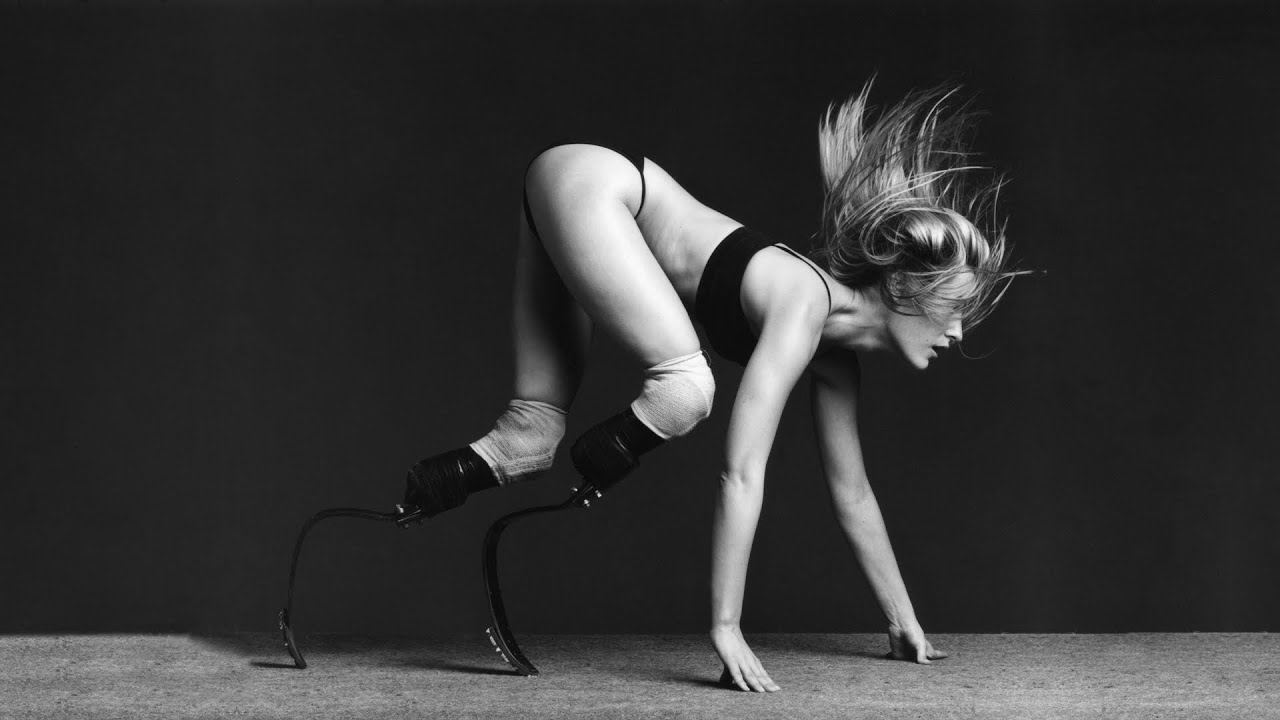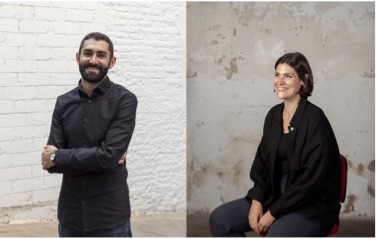Search
To search for an exact match, type the word or phrase you want in quotation marks.
A*DESK has been offering since 2002 contents about criticism and contemporary art. A*DESK has become consolidated thanks to all those who have believed in the project, all those who have followed us, debating, participating and collaborating. Many people have collaborated with A*DESK, and continue to do so. Their efforts, knowledge and belief in the project are what make it grow internationally. At A*DESK we have also generated work for over one hundred professionals in culture, from small collaborations with reviews and classes, to more prolonged and intense collaborations.
At A*DESK we believe in the need for free and universal access to culture and knowledge. We want to carry on being independent, remaining open to more ideas and opinions. If you believe in A*DESK, we need your backing to be able to continue. You can now participate in the project by supporting it. You can choose how much you want to contribute to the project.
You can decide how much you want to bring to the project.

Sitting, lying in bed, walking, on a podcast, in high contrast, you receive this text in a unique way. Perhaps it will penetrate and activate you or perhaps it will open up in you a new perception of your own body. Thinking and enacting practices centered on and from the understanding of diverse bodies leads us into a complex debate. We attempt here to write down some perspectives and, above all, to share experiences of which we have been a part, and to think about which practices and technologies open up our imagination of the diverse body.
In recent years there has been a lot of debate around disability and functional diversity [1]Terms widely proposed and worked on by the Foro de Vida Independiente (Independent Living Forum) (2001) and the Foro de Vida Independiente y Divertad (Independent Living and Diversity Forum) (2009). The disability system is developed around standards based on the normative individual who assesses the degree of disability and determines a person’s right to access government aid. There is a classification governed by the ICF [2]International Classification of Disability and Health Functioning. Available in [https://apps.who.int/iris/bitstream/handle/10665/43360/9241545445_spa.pdf] that operates in Spain and Latin America and is endorsed by the WHO. This measure, utilized by science, establishes all kinds of clinical classifications that determine to what extent a body “fits” into normative society. As Víctor H. Gutiérrez explains: «this normative fiction is based on mandatory bodily integrity […] that allows subjects to be profitable for a system that seeks to be orderly and productive. […] The concept of disability in Western societies alludes to a series of practices and discourses with which a sector of society is excluded, segregated.»[3]Gutiérrez, Víctor H. (2019), Radiografías. Ensayos autobiográficos desde los márgenes (X-Rays. Autobiographical essays from the margins). CENART, Mexico. Extract available in Reflexiones sobre … Continue reading
Broadly speaking, this model produces practices and technologies that fix, repair and normalize bodies so that they can play a productive and integrative role at the functional level. There are increasingly optimized devices that make it possible to transgress the limits of the body, as proposed by the Biomechatronics [4] See [https://biomech.media.mit.edu/ ] research group at MIT, with its motto Towards the end of disability, developing high-tech prosthetics and exoskeletons that recover and even increase the mechanical functions of the body. There is also the well-known “Cheetah Legs” [5] See [https://en.wikipedia.org/wiki/Flex-Foot_Cheetah], prosthetics designed to optimize the career of Paralympic athletes that allow them to run faster than Olympic athletes. There are also transhuman technologies that transform bodies into superpowered cyborgs. As Catherine Kramer comments: «Technologies are extensions of ourselves, transgressing (increasing or changing) our abilities and at the same time raising questions, since they destabilize the idea, or the cultural consensus, of what it means to be human.» [6] Kramer, Catherine (2015) in + Humanos. El Futuro de Nuestra Especie (+ Humans. The Future of Our Species). CCCB, Barcelona. . In the artistic field, practices like Stelarc’s are based on the idea that the body is obsolete and that it must evolve to explore new limits. For Stelarc, the body is “biologically inadequate”, a radical position that annihilates any possibility of understanding the diverse body as capable of and directly adapted to its surroundings.
 Image of Paralympian Aimee Mullins wearing Cheetah Legs. Image taken from [https://www.youtube.com/watch?v=7mokPWCTPZY ]
Image of Paralympian Aimee Mullins wearing Cheetah Legs. Image taken from [https://www.youtube.com/watch?v=7mokPWCTPZY ]
Perhaps these practices point to a path of significant progress, but it might be good to rethink them in terms of a complexity that goes beyond the limits of the skin or of what is productive. As Víctor H. Gutiérrez (2019) says, the discourse of disability colonizes territories, bodies and epistemes and, we might add, assembles cyborg-bodies that continue to be unable to have full autonomy or spaces where they might attend to, explore and express “other capacities”. Júlia Ayerbe (2020) comments that these are merely technological patches, poor substitutes for an able body.[7] Ayerbe, Júlia (2020) at the conference “La Anatomía no es Destino” (Anatomy is not Destiny), Museo Nacional Centro de Arte Reina Sofía, Madrid
From the position of functional diversity, all bodies are understood as diverse insofar as each one has different functionalities and capacities to relate to the environment. Soledad Arnau explains: «Through this terminological change, we can apprehend the specific human reality of functional diversity from a different philosophical, ethical and political approach.»[8]Arnau, Soledad (2020) in “Cuerpos Diversos”. Utopia nº6. To divert the gaze from what is empowering towards being in the world, from functional productivity towards living in multiple ways, from personal problems towards the design of our physical surroundings that allow a full life for all bodies. In this way, practices are utilized that understand the body in its surroundings. This is the case of En Torno a la Silla (About the Chair) [9] See [https://entornoalasilla.wordpress.com/ ] , a research and activist collective dedicated to collaborative prototyping of wheelchairs, their occupants and their relationships: «A wheelchair is a space, it is an environment, it is even a small agora in that […] human things happen there.»
If we understand that all bodies wish, care, play, and if we stop considering health, autonomy and quality of life as merely individual issues, practices emerge such as Autofabricantes (Self-Manufacturers) [10] See [https://autofabricantes.org/ ], a citizen group for the research and development of open source and accessible prosthetics and assistive products for boys and girls. With Autofabricantes we learn that, with ways of doing things based on sensitive listening, play and trust, new possibilities arise. In this way, a prostheses does not follow the famous motto of modern design “form follows function”, but rather “form follows community”. Listening to and co-designing methodologies of working with girls and boys in the workshops allowed the development of one of the group’s most innovative prostheses, the Supergiz [11] See [https://autofabricantes.org/investigacion/supergiz/ ]. This device does not imitate the shape and function of a hand but instead works like an adapted glove to which a multitude of interchangeable gadgets can be attached for each specific activity, such as jumping rope, tying a ponytail, bouncing a ball, playing a turntable or swimming.

Yanith using her Supergiz prosthesis. Image from the Autofabricantes/Gekkolab project, produced during the LABIC Colombia workshops (2018)
Directly involving girls and boys in the process of designing and making decisions about their prostheses, working from a playful perspective without prejudices, made it possible to open up their imagination. Working from a non-productive perspective produces poetic devices [12]Sánchez, José A. (2016). “Dispositivos poéticos: disidencia y cooperación” (Poetic devices: dissidence and cooperation), Faculty of Arts of the National University of Colombia. Lecture … Continue reading(Sánchez, José A. 2016) that disrupt the norm, displace categories, point out problems, expand the limits of what we know, and modify our spectrum of sensitivity.
In the context of artistic practices, back in the 1970s Rebecca Horn questioned the limits of the body through bodily devices. Artists with functional diversity, such as Lisa Bufano, blur limits with non-anthropomorphic prostheses, drastically transforming her body and movements in her performances. These are practices capable of making us think and be different, not only because they broaden and question the idea of what is empowering or distort the idea of what is human, but also because they explore new ways of operating in/with our surroundings.
We had the opportunity to explore these ideas through the launch of the LATE [13] See [https://autofabricantes.org/investigacion/late/ ] (Madrid, 2018-2020), a citizen research laboratory attached to Autofabricantes and developed at Medialab Prado, which focused on reflection and experimentation of the body, art and prosthetics. It was the first attempt in which we combined these themes with the methodologies of collective creation and experimentation linked to free culture, with a purely experimental objective, the context of the living arts. «We need to create fantasies about disability, or perhaps cripple fantasies with the intention of finding ties beyond rigid and essentialist identifications. We must encourage respons-abilities that, as Donna Haraway said, assemble relationships between problems, cultivate collaborative processes and dramatize skills, sensibilities and concerns in places where there are entanglements and ruptures in order to push the experiential membership of disability towards an encounter with unexpected relatives» (Maldonado, 2020). [14]Maldonado Ramírez, Jhonatthan (2020) “Pixarcrip: cuerpos múltiples, respons-habilidades anticapacitistas y parentescos inesperados” (Pixarcrip: multiple bodies, respons-abilities, … Continue reading.
In a multidisciplinary group, with intuition and material prototyping, we built new links within a collective perspective of the body. With devices that transformed a voice into vibrations of any object or heavy dysfunctional “wings,” we were able to generate artifacts to experience other ways of recognizing ourselves, a collective doing, inhabiting and knowing. Small practices allowed us to embody other ways of being in the world which are more multiple, diverse and, perhaps, more just.
[Featured image: Lisa Bufano, image taken from http://artbridges.ca/view_item/events/285]
| ↑1 | Terms widely proposed and worked on by the Foro de Vida Independiente (Independent Living Forum) (2001) and the Foro de Vida Independiente y Divertad (Independent Living and Diversity Forum) (2009) |
|---|---|
| ↑2 | International Classification of Disability and Health Functioning. Available in [https://apps.who.int/iris/bitstream/handle/10665/43360/9241545445_spa.pdf] |
| ↑3 | Gutiérrez, Víctor H. (2019), Radiografías. Ensayos autobiográficos desde los márgenes (X-Rays. Autobiographical essays from the margins). CENART, Mexico. Extract available in Reflexiones sobre el cuerpo discapacitado, apuntes para un futuro manifiesto (Reflections on the disabled body: Notes for a future manifesto), Nexos (2020) https://discapacidades.nexos.com.mx/reflexiones-sobre-el-cuerpo-discapacitado-apuntes-para-un-futuro-manifiesto/ |
| ↑4 | See [https://biomech.media.mit.edu/ ] |
| ↑5 | See [https://en.wikipedia.org/wiki/Flex-Foot_Cheetah] |
| ↑6 | Kramer, Catherine (2015) in + Humanos. El Futuro de Nuestra Especie (+ Humans. The Future of Our Species). CCCB, Barcelona. |
| ↑7 | Ayerbe, Júlia (2020) at the conference “La Anatomía no es Destino” (Anatomy is not Destiny), Museo Nacional Centro de Arte Reina Sofía, Madrid |
| ↑8 | Arnau, Soledad (2020) in “Cuerpos Diversos”. Utopia nº6. |
| ↑9 | See [https://entornoalasilla.wordpress.com/ ] |
| ↑10 | See [https://autofabricantes.org/ ] |
| ↑11 | See [https://autofabricantes.org/investigacion/supergiz/ ] |
| ↑12 | Sánchez, José A. (2016). “Dispositivos poéticos: disidencia y cooperación” (Poetic devices: dissidence and cooperation), Faculty of Arts of the National University of Colombia. Lecture available at [http://archivoartea.uclm.es/mediatecas/dispositivos-poeticos-disidencia-y-cooperacion/ ] |
| ↑13 | See [https://autofabricantes.org/investigacion/late/ ] |
| ↑14 | Maldonado Ramírez, Jhonatthan (2020) “Pixarcrip: cuerpos múltiples, respons-habilidades anticapacitistas y parentescos inesperados” (Pixarcrip: multiple bodies, respons-abilities, anti-abilities and unexpected kinships), Utopia. |

Camila René Maggi is an architect, founding member of Autofabricantes and coordinator of the LATE Lab project; she is currently a teacher and researcher at BAU, Centro Universitario de Artes y Diseño de Barcelona, specializing in the development of projects that combine creative practices between art and design; she is developing a thesis based on practices where she deploys methodologies, tools and artifacts that open imaginaries and rethink the aesthetic, critical, (dis)functional, political and speculative possibilities of diverse bodies and mediate new ways of producing links.
Francisco Díaz is a university lecturer and researcher at BAU, focused on collaborative design and social innovation in community environments. Since 2015 he coordinates and researches in the Autofabricantes project. He directed the “Body, Health and Autonomy” Lab co-funded by the Daniel and Nina Carasso Foundation at Medialab Prado. He is currently Ashoka Fellow and founder-coordinator of the Gekkolab network to extend the project to other countries.
"A desk is a dangerous place from which to watch the world" (John Le Carré)